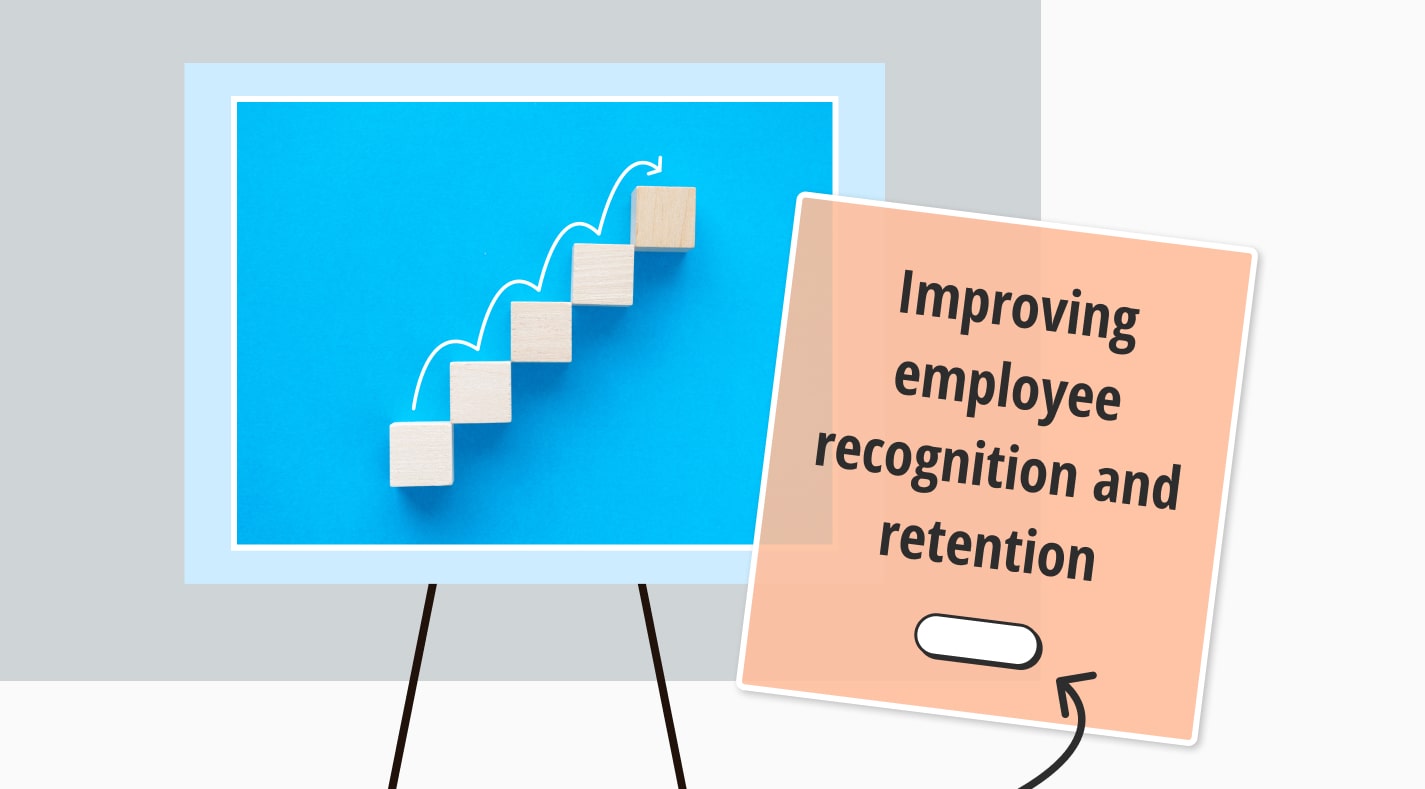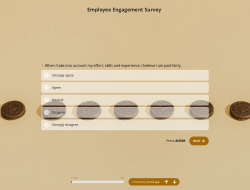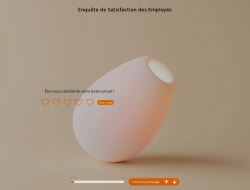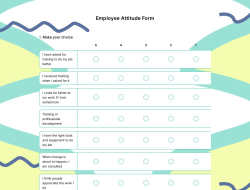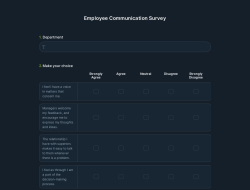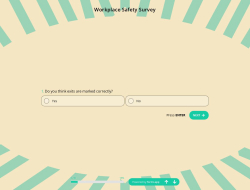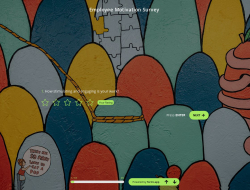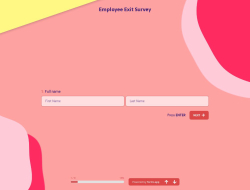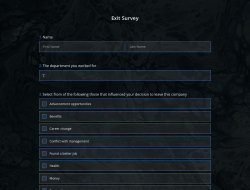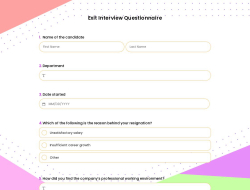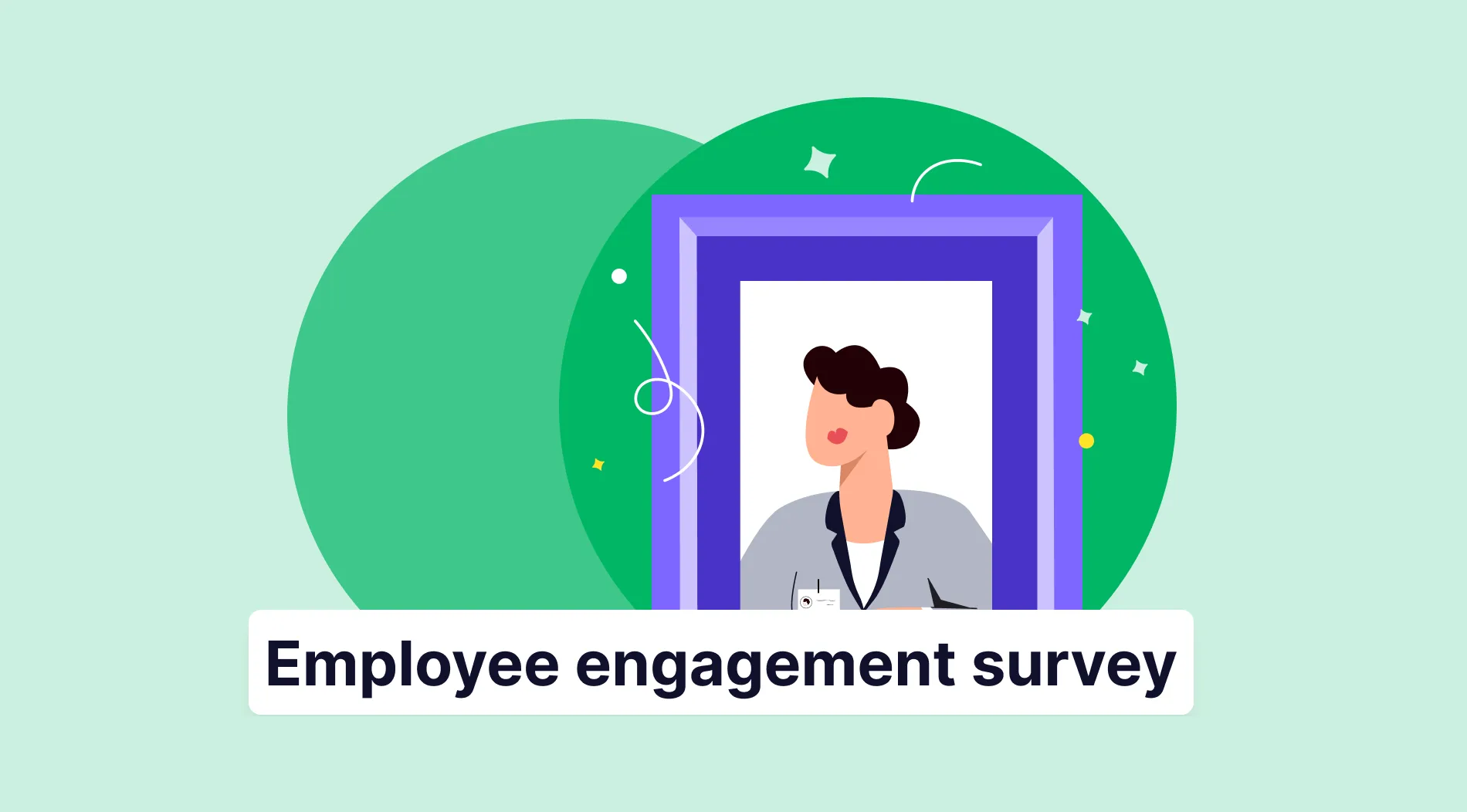If you run a startup, having a capable and thriving workforce can make all the difference to your sustenance. But acquiring talents is not enough. You must also know how to retain your employees to maintain workflow and productivity.
When a company appreciates its staff and recognizes their efforts, it increases employee satisfaction and retention.
That’s where employee surveys can come to your aid. They help you gauge the chances of attrition and counter any issue before it escalates. Moreover, it shows employees that the company values their opinion, adding to employee recognition.
For a startup, the impact of employee attrition can be severe. To help companies navigate this problem, we have compiled a guide on implementing employee surveys for better recognition and retention.
Why employee recognition and retention matters for startups
The benefits of recognizing and retaining employees are not limited to a stable workflow. The following are perks you can drive via a proper employee recognition and retention program:
1 - Saves money
Employee turnover is expensive. According to Glassdoor, hiring a new employee costs an average employer in the U.S. about $4000. It also causes loss of knowledge, reduced employee morale, and a hindered workflow.
Apart from being a huge logistical roadblock, employee turnover involves a substantial financial burden. According to Forbes, hiring a new employee can cost a company 1.5 to 2 times the employee’s annual salary.
Startups have limited budgets and resources. To grow their business, making the best of every investment is essential. Hiring, onboarding, and training new employees is a hefty investment for them, which also involves advertising and screening. So, employees moving in and out of your company frequently can add up to a hefty loss for a startup.
By recognizing employees for a job well done, you can make them feel valued. It will increase employee satisfaction, helping you create a happy and engaged workforce. This way, your retention rate and your talent acquisition ROI will increase. You don’t have to hire new talent now and then, saving much money.
2 - Improves morale and productivity
Both employee recognition and retention are crucial in boosting your workforce’s morale and improving their productivity. When morale is high, employees are more productive and less likely to change jobs.
Regular recognition gives them a boost of confidence in their capabilities. For example, an employee completes a project in record time and with impeccable perfection. Recognizing their efforts will show your appreciation for your workforce. They will be motivated to keep the standard up, increasing productivity in the workplace.
You need to be constantly creative to make your name as a start-up. Recognizing employees' talent encourages them to state their minds and bring unique ideas.
Hiring new employees and training them to handle responsibilities takes time. This negatively affects workflow and employee morale. High employee retention can keep the workflow steady and maintain productivity. It gives your existing employees a sense of job security and equips them to concentrate better on their work.
3 - Creates a positive company culture
High attrition may make your existing employees doubt their decision to stay in your organization. It affects the work environment and hinders productivity.
But a long-time employee aligns more with the company’s vision and goals. Their experience and wisdom enhance the work culture, inspiring others to improve.
An effective recognition program improves employee engagement, and an engaged employee creates a better company culture. Happy employees thrive individually and contribute to group tasks equally. Workplaces that recognize efforts and retain employees function in synergy, minimizing the chances of friction between employees.
Neal Taparia, founder of classic gaming site Solitaired, explains, “In our quarterly surveys, we ask our employees how to improve our business. This shows that their input matters in shaping our company and, as a result, creating a positive cultural impact on our company.”
4 - Attracts and retains top talent
Talent acquisition is a tricky process, especially for start-ups. Top talents mostly seek employment in well-known corporations. Moreover, budding businesses also lack the budget to advertise jobs extensively.
But by valuing and appreciating employees, start-ups can create a positive employer brand. Employee recognition creates a positive work environment, helping employees give their best daily. It creates a sense of belonging and pride in your workforce. They boast about their workplace and advocate their company to peers, making it easy for your company to gain new talents.
Start-ups with high employee retention strengthen their credibility. New talents see career growth and long-term association with your company and are more likely to apply for the vacancies.
5 - Boosts employee satisfaction and loyalty
Employees desire recognition. They want to know that their contribution matters. Failing to provide regular feedback and appreciation makes them feel undervalued and takes away their drive to improve.
Prompt recognition and tokens of appreciation make the employees feel valued. It adds to employee satisfaction, building a sense of belonging. The workers connect to their companies emotionally. This develops employee loyalty and boosts retention.
The role of surveys in improving employee recognition and retention
Employee recognition and retention increase your profitability. But as a start-up, creating an employee-centric atmosphere is important to build a positive employer brand.
But how do you identify the right initiatives to recognize your workforce and make them stay? The best people to answer this question are your employees themselves.
Employee surveys are the best tools to gather authentic feedback and identify retention issues. By conducting regular surveys, start-ups can examine how their employees perceive them. The generated data will help you benchmark your company's retention and recognition standards.
Employees often feel intimidated to voice their concerns or issues upfront. By administering employee surveys, you give them an indirect outlet to give feedback. It helps you identify unnoticed issues in employee management and prevents escalation by mitigating them early on.
Startups can also pinpoint which employees are at risk of attrition and take active initiatives to retain them. As an employer, you find what your workers expect from you and what would keep them engaged in their roles.
Reports show that 45% of employees feel their organization’s recognition program is disconnected. Moreover, 43% of employees find their recognition technology to be outdated. Conducting employee recognition surveys also helps you define the best ways to design employee recognition programs.
Here are some surveys start-use can use to create effective recognition programs and boost retention:
1 - Employee engagement surveys
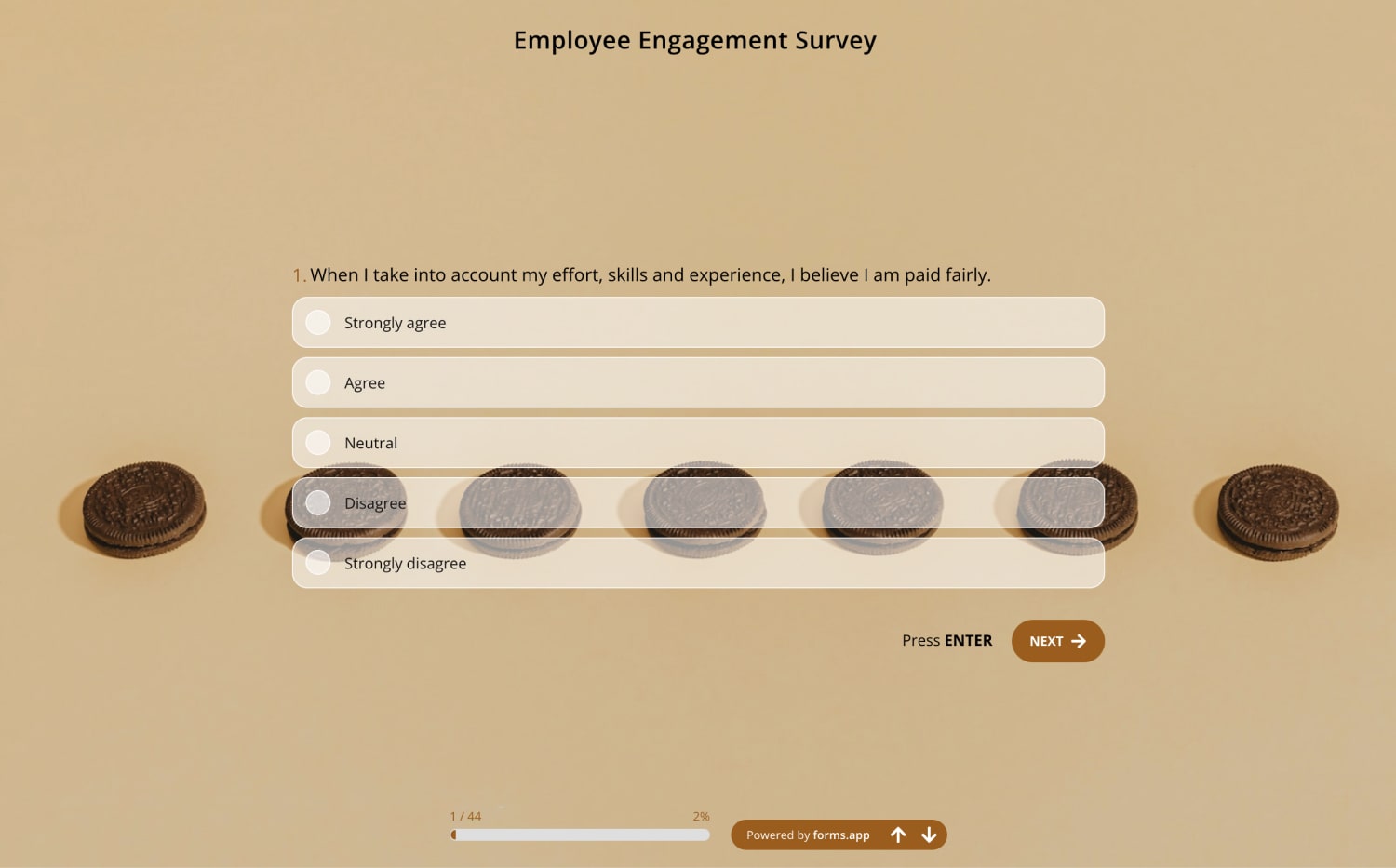
An example of employee engagement survey
Employee engagement surveys are questions that determine how committed and engaged a workforce is with their job and the company. Data generated from such surveys can give start-ups insights into an employee’s attitude towards their job role and the overall workplace environment.
Engagement surveys help companies determine employee net promoter scores. They foster open and honest feedback channels between an employer and the workers. Employees see their opinions matter and that the company intends to provide every support they need to thrive professionally.
2 - Pulse surveys
Pulse surveys are brief and quick surveys start-ups send their employees. These can be on a weekly, monthly, or quarterly basis. These types of surveys are used for checking in with employees regularly. They offer a pulse check on elements like employee engagement, satisfaction, communication, and the overall environment in the office.
Long surveys take time to complete and hence, are not feasible options for frequent rounds. On the other hand, pulse surveys usually contain 5 to 15 brief questions and take only a couple of minutes to complete, maximizing participation. It helps start-ups quantify the everyday emotions of employees, generating conclusive data.
Start-ups can use pulse surveys to track the everyday challenges of their employees. You can conduct them frequently and monitor issues in their most minute detail. Recording the everyday challenges helps startups create an employee handbook to standardize workforce management. Pulse surveys easily catch roadblocks that usually go unnoticed. This allows the start-up to resolve them early on and minimize employee turnover risks.
3 - Exit surveys
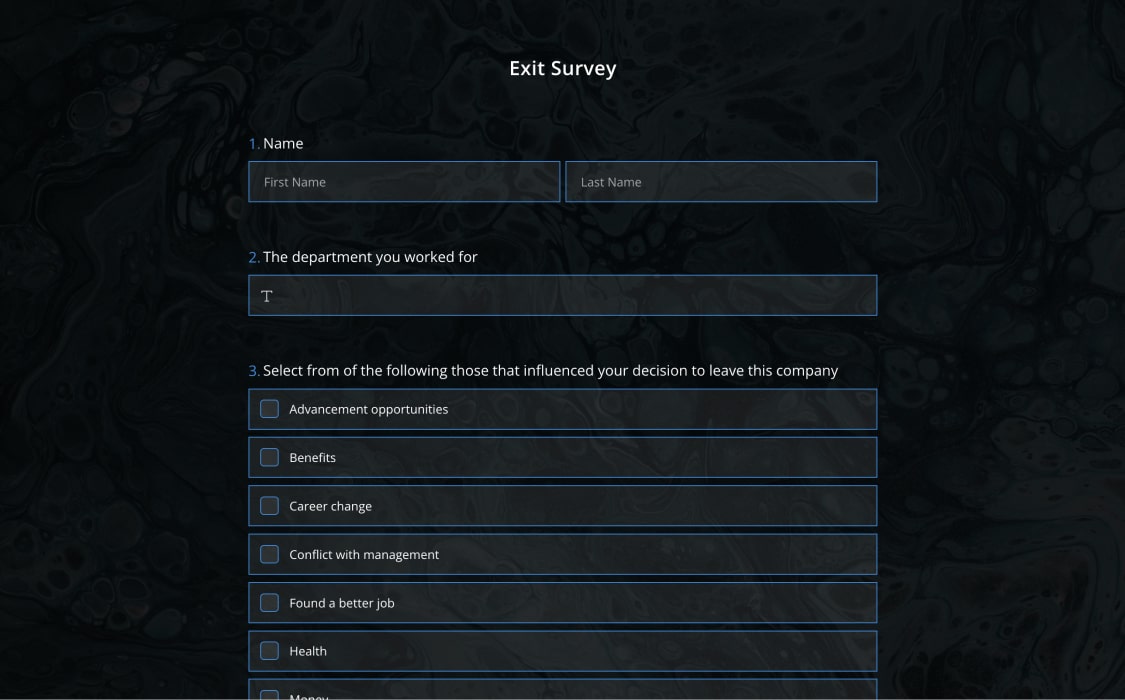
An example of employee exit survey
Employee exit surveys aim to gather data from employees who have willingly resigned from their position. The questions involve job satisfaction, frustrations, reasons for resignation, compensation, work environment, etc.
The goal here is to detect what caused the turnover and eliminate the problem. A departing employee has no reason to be secretive about their issues in your organization. Hence, the feedback from exit interviews is more authentic and insightful than the traditional surveys.
Exit surveys also help start-ups avoid friction by allowing them to discuss any pending liabilities with the departing worker.
Even though the employee is quitting, your eagerness to understand their problems will positively impact your employer brand. A happy exiting employee is more likely to refer the position to their friends and family and offer you capable recommendations. It also keeps the door open for future collaboration with the employee.
How to implement changes based on survey feedback
Conducting surveys will only create a positive employer image when you take proactive actions based on the results. By leveraging the insights from survey feedback, startups can make informed decisions and implement meaningful changes to enhance their employee recognition programs and improve employee retention rates.
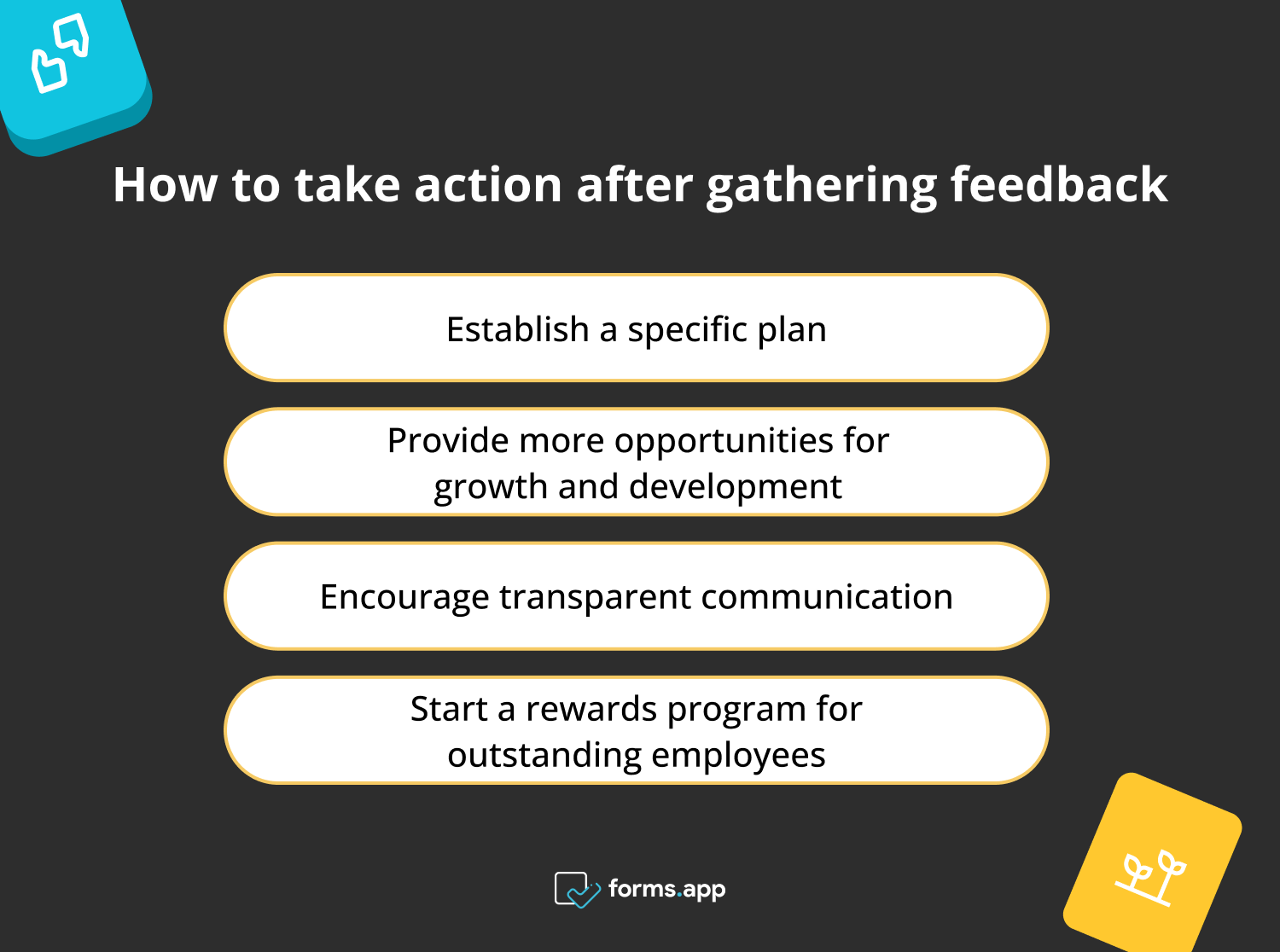
How to take action after gathering feedback
After conducting surveys, here are some changes you can implement:
Establish a specific plan
Survey results will help you identify areas of improvement. However, haphazardly trying to fix every problem immediately will only deteriorate the situation.
Hence, it's important to establish a specific plan before you make changes. Segment the challenges and prioritize the immediate ones. See where your implementations will reap the most benefits. Audit your budget to see what recognition initiatives fit your resources. This will help you plan and avoid any unforeseen halts in your recognition program.
Provide more opportunities for growth and development
The modern workforce knows its potential and seeks growth in their job. Hence, lack of career growth is one of the most prevalent reasons for employee attrition.
To improve retention, make it easy for your workers to climb the corporate ladder. Recognize skills and offer career growth accordingly. Invest in upskilling and regular development initiatives. Examine survey results and see what type of learning appeals to particular employees.
Give them opportunities to attend different seminars and workshops. You can assign experienced employees as trainers to pass on their wisdom. Include ample opportunities for hands-on learning and networking. Your employees will appreciate your initiatives of mutual growth, fostering a long-term association with your start-up.
Encourage transparent communication
Ensure your employees feel comfortable voicing opinions. Plan 1:1 meetings and listening sessions to address the issues. Taking time to discuss workplace issues will increase employee satisfaction and boost retention.
Be transparent about the survey results and discuss them with the supervisors across departments. Arrange a dialogue where you share organizational and departmental-level results. This will help you be more thorough with the implemented changes.
Start a rewards program for outstanding employees
One of the best ways to make your employees feel appreciated is by running a rewards program to appreciate excellence. It makes recognition tangible and makes employees feel important.
The rewards don’t have to be expensive. There are plenty of inexpensive but meaningful options you can choose from.
Here are some rewards you can consider:
- Company swag
- Paid vacation
- An extra holiday
- Gift cards
- Trophies and certificates
- Game tickets, etc.
Create a more positive work environment
A stressful work environment negatively impacts employee engagement. It hampers productivity and morale, reducing your retention rate. Trying different types of employee recognition methods can help you motive the employees.
To set your workforce up for success, turn a tension-packed office into a positive one. Make sure your onboarding system is thorough and smooth. Offer a comfortable workspace and flexible working hours. Encourage inter-departmental collaborations to enhance synergy. You can also organize fun HR activities to make employees feel at home.
Conclusion
In cutthroat niches, startups mindful of employee retention early on are more likely to succeed. For that, running meticulously planned surveys is crucial. Employee feedback can help start-ups identify issues and customize recognition programs accordingly.
While setting up recognition initiatives, make sure they align with employee needs. Keep the questions pointed out and make surveys a regular operation in your company. Combined with consistency and proactive efforts, employee recognition surveys can help you develop a culture that retains employees and attracts the best talents.
Sena is a content writer at forms.app. She likes to read and write articles on different topics. Sena also likes to learn about different cultures and travel. She likes to study and learn different languages. Her specialty is linguistics, surveys, survey questions, and sampling methods.
